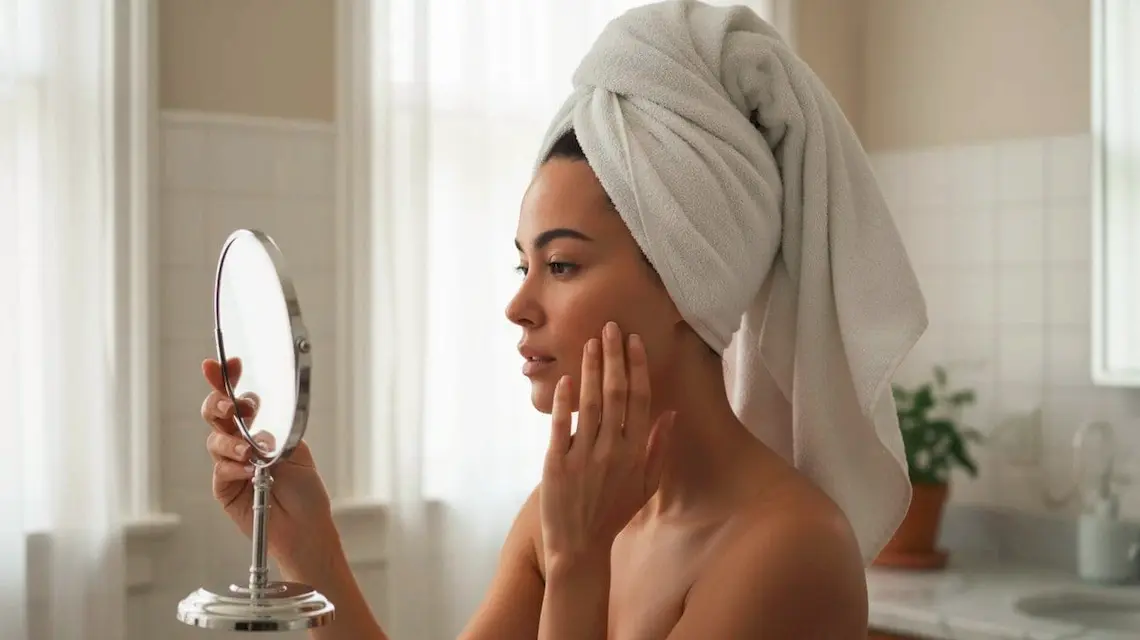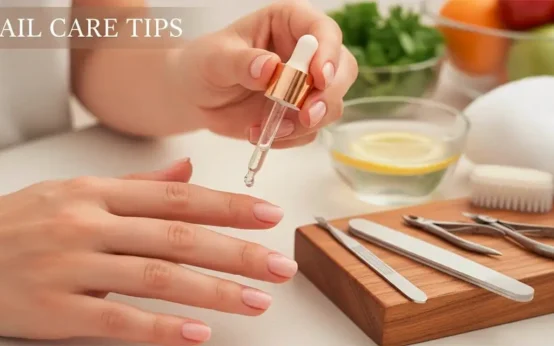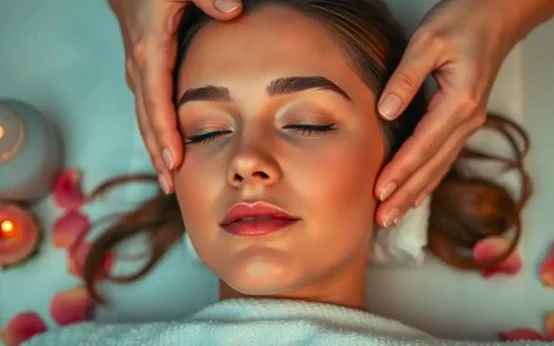You cleared the breakouts, but the marks stayed. Brown spots, lingering redness, or small dents can hang around and mess with your glow. That is normal, and you are not stuck with them.
This guide explains what you are seeing, how long it takes to fade, and how to build a routine that makes a visible difference. We will keep it simple, gentle, and proven. You will learn the best post acne routines that really work, plus when to call in a pro.
Most color changes fade in 8 to 12 weeks with daily care. Texture scars need more time, and some need in-office treatments. Patch test new products, go slow, and talk to a dermatologist if you have deep scars, skin of color concerns, or stubborn darkening. Think steady progress, not overnight change.
Post-acne 101: know your marks and scars so you pick the right routine
After acne, three things can linger. Brown spots, red or pink patches, and true scars. They can overlap, which is why it is helpful to name what you see before you treat it.
Hyperpigmentation, or PIH, shows up as brown or gray spots where a pimple was. It comes from extra pigment made during healing. Sunlight and picking make it worse. These spots often fade in 3 to 6 months with sunscreen and brighteners. Deeper marks can take longer.
Post-inflammatory erythema, or PIE, looks pink or red, sometimes even purple on lighter skin. It is leftover blood vessel dilation after inflammation. On deeper skin tones, redness can mix with pigment changes. Gentle care, sun protection, and patience help a lot. PIE may ease in a few months, but it can linger without care.
True scars change the skin’s texture. You might feel shallow dips, tiny deep pits, rolling waves, or raised bumps. Scars form when collagen is broken or overbuilt during healing. At-home care can improve tone and support the barrier, but deep texture changes often need in-office treatments for real results.
Here is a fast self-check. Look at the color first, then feel the surface with clean fingers in bright light. Press gently to see if the color blanches. You will match what you find to a clear plan.
Is it a dark spot, redness, or a true scar?
- If the color is brown or gray and does not blanch when pressed, it is likely PIH. This comes from extra melanin.
- If it is pink or red and gets lighter when pressed, it is likely PIE. This ties to blood vessels after inflammation.
- If you feel dips, pits, or raised areas, it is a scar. This comes from collagen loss or excess during repair.
What fades on its own and what needs help
- PIE can fade in a few months, faster with sunscreen and gentle, anti-redness care.
- PIH often fades over 3 to 6 months, faster with brighteners and nightly retinoids.
- Many scars do not fade on their own. Shallow texture can improve a bit with home care, but deeper scars usually need pro treatments.
Sunscreen and gentle routines speed all healing. Picking, harsh scrubs, and sun slow it down.
Treatment map: match the issue to the fix
- PIH responds to vitamin C, azelaic acid, niacinamide, tranexamic acid, gentle chemical exfoliation, and retinoids.
- PIE improves with anti-inflammatory care, barrier repair, sunscreen, and for stubborn cases, pulsed dye or other vascular lasers.
- Scars need collagen remodeling. Retinoids help slowly. Bigger gains come from peels, microneedling RF, lasers, TCA CROSS, subcision, or fillers.
Safety first: patch testing and when to see a derm
Patch test new actives for 2 to 3 days on the jaw or behind the ear. Start slowly, and avoid mixing too many actives at once. If strong stinging, peeling, or swelling shows up, stop and reassess.
See a dermatologist for deep or widespread scars, repeated darkening, very sensitive skin, melasma, or if marks do not improve after a few months of steady care.
Daily routine that actually works: simple morning and night steps
A simple routine is easier to stick to every day. Great skin is a habit. Follow cleanse, treat, moisturize, and protect. Adjust the texture for your skin type, not the steps. This section shows how to build the best post acne routines that really work without overload.
Order matters. Go from thinnest to thickest, and keep actives spaced at night to lower irritation. Consistency beats strength. You get more from a gentle plan you can follow daily than a harsh plan you abandon after a week.
Morning routine: protect, brighten, prevent
- Gentle cleanser.
- Toner or mist if you like, unscented and alcohol free.
- Brightening serum, choose one: vitamin C 8 to 15 percent, azelaic acid 10 percent, or niacinamide 4 to 5 percent.
- Lightweight moisturizer with ceramides.
- Broad-spectrum SPF 50 every day. Reapply at mid-day if you are outside.
Tip: if vitamin C stings, try azelaic acid or niacinamide instead.
Night routine: repair the barrier and boost turnover
- Cleanser. Double cleanse only if you wear makeup or heavy sunscreen.
- Retinoid 2 to 4 nights a week to start, such as adapalene 0.1 percent or a prescription tretinoin if your doctor advised it.
- On non-retinoid nights, use a hydrating serum with glycerin or panthenol, or use niacinamide.
- Moisturizer to seal in water. Pick a thicker cream if your skin is dry.
Tip: if your skin is sensitive, buffer your retinoid by applying moisturizer first, then a pea-size retinoid.
Weekly add-ons: exfoliate without overdoing it
Use chemical exfoliation 1 to 2 times a week only.
- Salicylic acid 0.5 to 2 percent helps with clogged pores.
- Lactic or glycolic acid 5 to 10 percent helps with tone and texture.
Skip scrubs, they irritate. Try a soothing mask with centella or colloidal oatmeal once a week. Do not use exfoliants on the same night as retinoids.
Customize by skin type and tone
- Oily or acne-prone: gel cleanser, niacinamide, salicylic acid weekly, lightweight gel moisturizer.
- Dry or sensitive: cream cleanser, azelaic acid over vitamin C, lactic acid instead of glycolic, thicker ceramide cream.
- Deeper skin tones: prioritize sunscreen, azelaic acid, and tranexamic acid to lower PIH risk. Avoid harsh home peels. Seek a derm’s advice before trying high-strength acids or devices.
Fade dark spots and redness faster with proven ingredients
You can speed fading with the right actives, smart layering, and patience. Start with one brightener, add another only if your skin stays calm. Always pair brighteners with sunscreen, or you will chase your tail as marks re-darken.
Apply water-based serums first, then thicker products. Leave a minute between layers, longer if you feel any sting. If your skin gets tight, scale back to every other day until it adjusts.
Hyperpigmentation (brown spots): best actives and how to layer
- Vitamin C 8 to 15 percent in the morning.
- Azelaic acid 10 to 15 percent, morning or night.
- Niacinamide 4 to 5 percent, morning or night.
- Tranexamic acid 2 to 5 percent at night.
Start with one brightener plus sunscreen. After 2 weeks, if your skin tolerates it, add a second brightener at night. Keep a retinoid at night 2 to 4 times weekly to speed turnover. If dryness increases, drop back on exfoliants and add more moisturizer.
Post-acne redness (PIE): calm it and protect it
Focus on barrier-first care. Use ceramides, cholesterol, and fatty acids at night. Add azelaic acid 10 percent for anti-redness support. Green tea or licorice extract serums can help comfort skin. Avoid hot water and harsh scrubs.
If redness stays for 6 to 12 months despite sunscreen and gentle care, talk to a derm about pulsed dye or other vascular lasers.
Sunscreen stops re-darkening
UV and even visible blue light can re-darken PIH. Use SPF 50 daily, rain or shine. Reapply if outdoors for more than two hours. For oily skin, try gel or fluid SPF. For deeper tones, look for modern formulas that avoid a white cast, such as tinted mineral or clear chemical options. Hats, shade, and avoiding peak sun hours help a lot.
An 8-week fading plan you can follow
- Week 1 to 2: one brightening serum plus SPF 50, retinoid two nights.
- Week 3 to 4: add a second brightener at night if skin is calm.
- Week 5 to 6: add one exfoliation night weekly.
- Week 7 to 8: keep steady, take clear photos in the same light.
Expect 20 to 40 percent fading by week 8 if you wear sunscreen daily. If irritation kicks in, drop the exfoliant first, then space out actives.
Smooth acne scars: what works at home and what needs a pro
Scars are about texture, not color. Home care can lift overall tone and support collagen, but deeper changes respond best to in-office treatments. Set realistic goals, track progress with photos, and give treatments time to build.
Know your scar type: ice pick, boxcar, rolling, hypertrophic
- Ice pick scars are tiny, deep pits.
- Boxcar scars are wider with sharp edges.
- Rolling scars look like broad, shallow waves.
- Hypertrophic or keloid scars are raised and can feel firm.
Each type responds to different methods, so a mix of treatments is common.
At-home options that help texture over time
Retinoids can improve collagen over months. Gentle chemical peels at 5 to 10 percent can smooth slightly and even tone. Silicone sheets or gels help raised scars flatten with steady use. LED red light can support healing and calm. Aim for small gains over 3 to 6 months.
Avoid aggressive at-home microneedling or high-strength peels without training. The risk of infection or darkening is real, especially on deeper skin tones.
When to go pro: treatments that change texture
- RF microneedling works well for rolling scars and mixed types. Many people do 3 to 5 sessions.
- Fractional lasers like Fraxel or low-density CO2 help with texture. Expect 2 to 4 sessions with careful aftercare.
- TCA CROSS targets ice pick scars with focused acid. Often 2 to 4 sessions.
- Subcision releases tethered rolling scars. It can be paired with filler for faster smoothing.
Darker skin can do well with RF microneedling, lower energy lasers, and careful pre and post care. Ask about PIH prevention, such as pretreatment with topical agents and strict sunscreen.
Timeline, costs, and choosing a clinic
Expect improvement, not perfection. A typical series yields 30 to 70 percent smoother texture over months, depending on scar type and method. Sessions are usually spaced 4 to 8 weeks apart to allow collagen to remodel.
Here is a rough snapshot to help plan. Prices vary by region and clinic.
| Treatment | Typical Sessions | Ballpark Cost per Session | Best For |
|---|---|---|---|
| RF Microneedling | 3 to 5 | $400 to $900 | Rolling, mixed scars |
| Fractional Laser | 2 to 4 | $600 to $1,500 | Texture, boxcar, mixed |
| TCA CROSS | 2 to 4 | $150 to $400 | Ice pick scars |
| Subcision | 1 to 3 | $300 to $800 | Rolling, tethered scars |
| Filler add-on | As needed | $400 to $1,000 | Softening depressions |
Choose a board-certified provider. Review before and after photos on your skin tone. Ask about downtime, PIH prevention plans, and how they adjust settings for sensitive or darker skin. Take baseline photos, and agree on a realistic goal.
Conclusion
Post-acne care gets easier when you know what you are treating. Identify if you have dark spots, redness, or true scars, then follow a simple routine. Use brighteners, a steady retinoid, and daily SPF to fade color changes. Seek professional care for texture. Give it 12 weeks, track with photos, and keep your routine gentle and steady for the best post acne routines that really work.
If your marks are not improving or you have deep scars, book a visit with a dermatologist. Thanks for reading, and if you have a question about your routine, drop it in the comments.
Related post: How to Treat Acne Scars at Home Naturally
Best Post Acne Routines That Really Work: FAQs
What’s the simplest post-acne routine that actually works?
- Gentle cleanser, morning and night
- Lightweight moisturizer, daily
- SPF 30 or higher every morning
- Retinoid at night, 2 to 5 times a week to start
- Targeted serum, azelaic acid, niacinamide, vitamin C, or salicylic acid based on your needs
How do I fade dark marks after acne?
Use sunscreen daily, it prevents marks from lingering. Add azelaic acid 10 to 15 percent or niacinamide 4 to 5 percent for tone and redness. For brown spots, try vitamin C or a gentle chemical exfoliant, like lactic acid or salicylic acid, 1 to 3 times a week. Results take 8 to 12 weeks.
What’s the difference between red marks and brown spots?
Red or pink marks are post-inflammatory erythema, leftover redness from inflammation. Brown or gray spots are post-inflammatory hyperpigmentation. Red marks respond well to time, SPF, niacinamide, azelaic acid, and sometimes LED red light. Brown spots fade with SPF, vitamin C, retinoids, azelaic acid, and gentle acids.
How often should I exfoliate after acne?
Start 1 to 2 times a week with a mild acid, like salicylic 0.5 to 2 percent or lactic 5 to 10 percent. Increase slowly if your skin tolerates it. If you use a retinoid, keep acid use low to avoid irritation.
Which retinoid should I use post-acne?
Adapalene 0.1 percent is great for texture, pores, and marks. Tretinoin is stronger, but needs a prescription. Start with a pea-size amount, apply over moisturizer if you’re sensitive, and use it 2 to 3 nights a week, then build up.
Can I use vitamin C and retinoids together?
Yes, but many prefer vitamin C in the morning and retinoids at night to reduce irritation. If you get stinging, separate them by time or use vitamin C every other day.
Do I still need sunscreen if I’m indoors?
Yes. UVA passes through windows and worsens dark spots and redness. Use broad-spectrum SPF 30 or higher every morning, and reapply if you get sun exposure.
What ingredients help repair my skin barrier?
Look for ceramides, cholesterol, fatty acids, glycerin, squalane, and panthenol. Keep it simple when irritated. A bland moisturizer twice daily speeds recovery and helps actives work better.
How do I treat texture and shallow scars at home?
Use a retinoid long term, add azelaic acid, and consider gentle at-home acids 1 to 2 times a week. Microneedling pens at home are risky. For real scar change, in-office care works better.
What treatments work for deeper acne scars?
- Boxcar and rolling scars, microneedling, radiofrequency microneedling, subcision, TCA peels
- Ice pick scars, TCA CROSS
- Mixed scars, combination plans
Expect 3 to 6 sessions for visible change. See a board-certified dermatologist.
Is skin cycling good after acne?
It can help reduce irritation. Example, night 1 retinoid, night 2 gentle exfoliant, nights 3 to 4 barrier repair only. Adjust based on your skin’s response.
How do I avoid new breakouts while treating old marks?
Keep a basic anti-acne step in your routine. Options include adapalene at night or a 0.5 to 2 percent salicylic acid toner a few times per week. Spot treat active pimples with benzoyl peroxide 2.5 percent.
What order should I apply products?
Cleanser, toner or liquid treatments, serums, moisturizer, then sunscreen in the morning. At night, cleanser, treatments, moisturizer. Thinnest to thickest is a good rule. Sunscreen is always last in the morning.
How do I know if I’m purging or just irritated?
Purging occurs where you usually break out and lasts 4 to 8 weeks after starting actives like retinoids or acids. Widespread burning, flaking, or new breakouts in new areas points to irritation. If it’s irritation, cut back use or switch to gentler products.
Are pimple patches useful after acne?
Hydrocolloid patches help with healing and reduce picking. They do not fade marks, but they can prevent worse spots and scars.
What if I have darker skin and post-acne spots?
Daily SPF is key. Use azelaic acid, niacinamide, and gentle retinoids. Avoid over-exfoliation, which can cause more hyperpigmentation. For procedures, pick providers experienced with skin of color.
What’s safe if I’m pregnant or breastfeeding?
Skip retinoids and high-strength salicylic acid. Safer picks include azelaic acid, niacinamide, sulfur, and glycolic or lactic acid at low strength. Always confirm with your clinician.
Can diet or habits help?
Some do better limiting high glycemic foods and whey protein. Manage stress, sleep well, and stop picking. Clean pillow cases and phone screens help reduce bacteria transfer.
Do I need “non-comedogenic” products?
It can help, but the term isn’t tightly regulated. Choose lightweight, oil-free or gel textures if you clog easily. Patch test new products for a week.
What if my skin is sensitive?
Use fewer actives, lower strengths, and buffer retinoids over moisturizer. Avoid strong fragrances and heavy alcohols. Introduce one new product every 2 weeks so you can track reactions.
How long until I see results?
Tone and redness, 4 to 12 weeks. Texture, 8 to 16 weeks. Scars, months, often with in-office care. Consistency beats intensity.
When should I see a dermatologist?
If you have cystic acne, scarring, or marks that do not improve after 3 months of steady care. Ask about prescription retinoids, azelaic acid, or procedures tailored to your scars.
What’s a budget-friendly routine that still works?
- AM, gentle cleanser, niacinamide serum, broad-spectrum SPF 30
- PM, gentle cleanser, moisturizer, adapalene 0.1 percent 2 to 4 nights weekly
Add azelaic acid if spots linger. Keep everything fragrance-free if you’re reactive.




 How To Remove Sun Tan From Hands
How To Remove Sun Tan From Hands  How to Take Care Your Nails
How to Take Care Your Nails  How to Improve Good Cholesterol (HDL)
How to Improve Good Cholesterol (HDL)  Hormone Health Tips for Women
Hormone Health Tips for Women  Heal Dry Damaged Hair: A Simple Plan That Works
Heal Dry Damaged Hair: A Simple Plan That Works  How to Look Much Younger Without Drastic Changes
How to Look Much Younger Without Drastic Changes